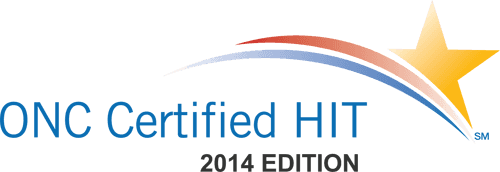How to Use a Patient Portal to Meet Meaningful Use Stage 2
- Blake Rodocker
- July 03, 2014

Outdated as of May 2021.
This article is outdated. Please find our updated resource that explains the current MACRA / MIPS / Meaningful Use regulations.
Patient engagement is a buzzword that’s been flying around for a while. In case you’re not familiar with it, here are a few industry definitions.
- “The process by which patients become invested in their own health.”
- “Patients’ use of educational materials and online resources to learn about better health and/or their own health conditions.”
- “When a patient feels comfortable challenging their doctor when something doesn’t seem right or when explanations are not clear.”
- “Actions individuals must take to obtain the greatest benefit from the health care services available to them.”
- “Patient engagement is a broader concept that combines patient activation with interventions designed to increase activation and promote positive patient behavior, such as obtaining preventive care or exercising regularly.”
What Does It Mean For You?
- Patient engagement is a key component in attesting for Meaningful Use Stage 2.
- It will also help you attract and retain healthy and profitable patients.
Let’s Start with Meaningful Use Stage 2
To meet Stage 2 as an eligible professional (EP), you must use a patient portal to meet the following Core Objectives:
- Core Objective: Provide clinical summaries for patients for each office visit.
- Measure: Clinical summaries provided to patients or patient-authorized representatives within one business day for more than 50 percent of office visits.
- Core Objective: Use secure electronic messaging to communicate with patients on relevant health information.
- Measure: A secure message was sent using the electronic messaging function of CEHRT by more than 5 percent of unique patients (or their authorized representatives) seen by the EP during the EHR reporting period.
- Core Objective: Provide patients the ability to view online, download and transmit their health information within four business days of the information being available to the EP.
- Measure 1: More than 50 percent of all unique patients seen by the EP during the EHR reporting period are provided timely (available to the patient within 4 business days after the information is available to the EP) online access to their health information, with the ability to view, download, and transmit to a third party.
- Measure 2: More than 5 percent of all unique patients seen by the EP during the EHR reporting period (or their authorized representatives) view, download, or transmit to a third party their health information.
To meet Meaningful Use Stage 2, you may use Bridge Patient Portal OR your EHR to meet the following objectives:
- Core Objective: Record the following demographics: preferred language, sex, race, ethnicity, date of birth.
- Measure: More than 80 percent of all unique patients seen by the EP have demographics recorded as structured data.
- Core Objective: Record and chart changes in the following vital signs: height/length and weight (no age limit); blood pressure (ages 3 and over); calculate and display body mass index (BMI); and plot and display growth charts for patients 0-20 years, including BMI.
- Measure: More than 80 percent of all unique patients seen by the EP have blood pressure (for
patients age 3 and over only) and/or height and weight (for all ages) recorded as
structured data.
The Good News?
You’ve chosen a patient portal system designed for patient engagement and a service team that is prepared. We don’t just expect you to meet the 5% messaging requirement – we want you to exceed it.
Here Are Some Tips for You:
- Understand your patients’ behavior and demographics.
- Why do they want to use the portal? For example:
- For chronic condition management patients, you should promote:
- Lab results
- Vitals tracking
- Care plans
- Communication with a coach or provider
- For healthy patients, you should promote:
- Appointment scheduling
- Wellness (e.g. health tips, HRA assessments)
- Diet/exercise management
- Communication with a coach or provider
- For chronic condition management patients, you should promote:
- Why do they want to use the portal? For example:
- Align the patient portal with your organization’s strategic goals.
- Include the goal of patient engagement in your hospital or practice’s policies, job descriptions, and mission and vision statements.
- Create value in enrollment.
- Start an enrollment drive.
- Create competitions among affiliated practices.
- Provide tablets/kiosks in waiting rooms.
- Create a marketing campaign.
- Promote on social media
- Send newsletters out to patients.
- Hand out paper marketing materials in your office (e.g. flyers, brochures, appointment cards)
- Promote on your website
- Include enrollment as part of the registration process.
- Make sure to collect email addresses from all patients upon intake.
- Have a help desk at the office for enrollment.
- Designate at least one “enrollment advisor” who knows how to walk patients through registration and tutorial.
- Encourage providers to promote the portal. Patients listen to doctors.
- Provide training and incentives for providers to connect with patients using the portal.
- Providers should acknowledge that their patients use the portal and encourage continued use: “Thank you for using our portal. We see that you care about your health.”
- Promote continued use.
- Portal use doesn’t stop at enrollment. Encourage continued use of the portal by communicating with patients via the portal. Assign a portal advisor to each patient to follow up at intervals after enrollment.
Attestation
The Bridge Patient Portal has a built-in Meaningful Use reporting module where you can export a report based on Core Objective, Provider and Reporting Period. A Bridge team member can help you run these reports when it comes time to attest.